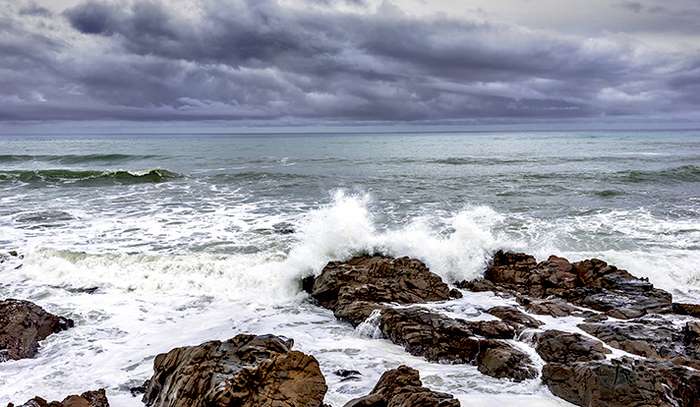New insights from the stalled El Nino of 2014

It may be even trickier to predict the strength of El Ni帽o weather patterns than previously thought, according to a study by Yale researchers.
A new variable鈥攊ntraseasonal wind bursts鈥攎ay play an unexpected role in the way El Ni帽o systems develop, the researchers say. The finding has implications for short-term, interannual atmospheric changes that bring global consequences.
The key to the finding was a strong El Ni帽o pattern that failed to materialize in 2014. Using satellite observations and computer simulations, the researchers discovered that an exceptionally strong, easterly wind burst in June of that year helped to stall the El Ni帽o to stall.
"Easterly wind bursts are fairly common, but the strength of this easterly wind burst was unusually high," said Alexey Fedorov, a Yale professor of geology and geophysics and author of a study appearing the week of Feb. 8 in the Proceedings of the National Academy of Sciences. "In this particular case, it was associated with the strengthening of the South Pacific subtropical high, possibly related to a cold ocean temperature anomaly south of the equator."
El Ni帽o events are the warm phase of the El Ni帽o-Southern Oscillation (ENSO), a periodic variation of water temperature and winds in the tropical Pacific Ocean. La Ni帽a is the cooling phase of ENSO. Both patterns have global implications for weather and climate.
Fedorov said random atmospheric processes make it inherently difficult to predict El Ni帽o. Since 2000, there has been a shift in El Ni帽o's properties, including its magnitude and frequency. El Ni帽o events have been more frequent during that time, compared to the previous two decades, but none of them reached the magnitude of El Ni帽o events in 1982 and 1997.
Of course, even a stalled El Ni帽o has an impact on future patterns. "Apparently the failed El Ni帽o of 2014 actually created favorable conditions for the 2015-2016 El Ni帽o we are experiencing now, which is now among the three strongest events on record," Fedorov said.
More information: Exceptionally strong easterly wind burst stalling El Ni帽o of 2014,
Journal information: Proceedings of the National Academy of Sciences
Provided by Yale University















